What is SEO (Search Engine Optimization)?
Carl Mullins • October 30, 2019
Any business hoping to market more effectively than their competition understands that approaching the challenge of acquiring and retaining customers, while being as competitive as possible, requires a multi-channel strategy.
A quick overview of SEO:
Google alone gets about a trillion searches per year. Somewhere in that mountain of searches are inquiries about the products and services people are looking for.
When people perform a search on Google, the vast majority of them do not comb through search results after the first page (typically of 10 results, plus ads). So, we know people are
searching and clicking from the first page of results. Furthermore, the higher up on the first page that a link appears, the more clicks and visits that page receives.
If your business appears high in search results for queries directly related to your products and services, you can count on receiving the lion’s share of visits and most likely, conversions.
There are other factors involved with the purchase journey, but let’s stick to the basics of what people commonly do with search.
In a nutshell, the practice of SEO (search engine optimization) by a professional marketer helps to rank your website’s web pages high on the first page of results for the keywords people are searching with to find products and services.
What SEO Isn’t:
For your business, your SEO team will do just that and then use competitive keyword analysis to optimize your website’s pages (the content, the code, and even off-site signals). Resulting in higher rankings in search results for the exact terms that your target audience uses to find your specific products and services.
Search Engine Optimization is simply one channel in your toolbox of tactics, strategies, and tools to gain the attention of and convert visitors into customers.
Google alone gets about a trillion searches per year. Somewhere in that mountain of searches are inquiries about the products and services people are looking for.
When people perform a search on Google, the vast majority of them do not comb through search results after the first page (typically of 10 results, plus ads). So, we know people are
searching and clicking from the first page of results. Furthermore, the higher up on the first page that a link appears, the more clicks and visits that page receives.
If your business appears high in search results for queries directly related to your products and services, you can count on receiving the lion’s share of visits and most likely, conversions.
There are other factors involved with the purchase journey, but let’s stick to the basics of what people commonly do with search.
In a nutshell, the practice of SEO (search engine optimization) by a professional marketer helps to rank your website’s web pages high on the first page of results for the keywords people are searching with to find products and services.
But what is SEO, exactly? Let’s start with what it isn’t and then clearly define SEO from a ‘what’s in it for me’ perspective.
- Not a guarantee (no one outside of Google truly knows the algorithm’s behavior)
- Not a get rich quick plan
- Not a way to trick the search engines
- Not the only piece to the overall marketing success puzzle
- SEO is dead and doesn’t work anymore
- SEO is easy
- SEO is a shady practice
- Directs relevant traffic to your site: Your site can attract tons of visitors, but if they’re coming to your site because Google tells them you’re a resource for a particular topic when you’re really not, that’s not relevant traffic. Instead, you’ll want to attract exactly the visitors you’re looking for — those who genuinely want to know more about your products, services, and brand.
- Quantity of traffic: As soon as you have the right people clicking through from the search engines, your traffic increases and so does your brand awareness and sales.
- SEO deals with organic results: Ads make up a significant portion of search results (in Google, ad slots appear on the top and bottom of search results). ‘Organic’ traffic is any traffic that you don’t pay the search engines for.
- Highly trusted: Psychologically speaking, if people see your site at the top of their search results, your visitors think that you are an authority in your field and that you are trustworthy before they even land on your site.
For your business, your SEO team will do just that and then use competitive keyword analysis to optimize your website’s pages (the content, the code, and even off-site signals). Resulting in higher rankings in search results for the exact terms that your target audience uses to find your specific products and services.
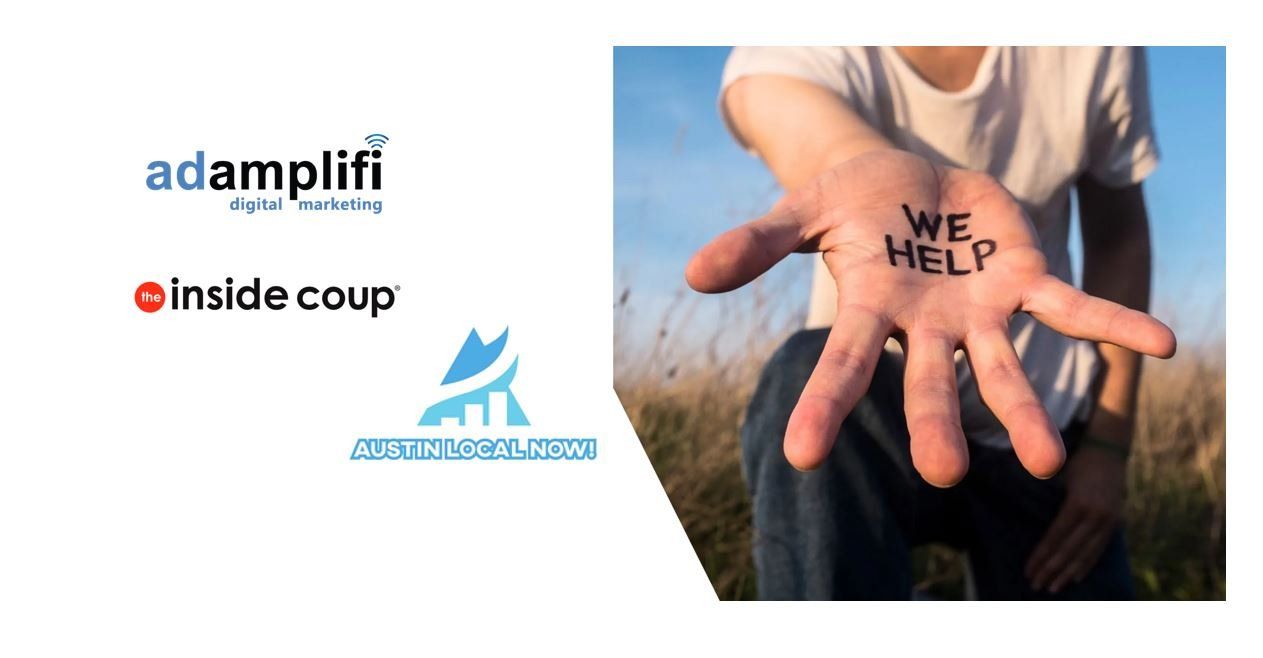
Small business owners are under historic pressure today and are making weekly, or sometimes daily, adjustments to survive this disruption. So, in early March, I started working with Kevin Wilmore, owner of the inside coup magazine to work on ways we could help small businesses in the Austin area. Our first project together was to publish a community service website to help restaurants, breweries and health/wellness businesses. These businesses were being impacted more than most and we wanted to provide a place for Austin area residents to refer their favorite neighborhood business. When someone recommends one of their favorite businesses, we put them on the site with quick links to order food, gift cards or merchandise. Go to austinlocalnow.com and suggest a business to add to the list. Our next project was to begin a webinar series to provide education. Several times each month, we have either participated in an online panel or hosted a webinar. Our standard presentation in called 7 Ways to Improve Your Marketing Now (and two things not to do) . We share insights on how to approach small business marketing efforts right now and how to come out stronger when we return to more normal times. Interested? Join us Thursday, June 18th at 10:00 for a Marketing webinar where we will share insights on how to approach your marketing efforts right now and how to come out stronger when we return to more normal times. In our hour together, we will discuss: ▹Why you should keep advertising ▹How to change your Marketing tone ▹Impacts of Technology and a look at the Buyers Journey ▹Why Direct Response advertising is best during periods of slower economic activity ▹Importance of your Online presence ▹How you can improve your search engine rankings w/o spending money on Search Engine Optimization (SEO) ▹Funnels and how they work Finally, we decided to offer Marketing tools and services either free or at a reduced prices to help as many small business owners as possible. We are offering a free Six-Point Digital Marketing Needs Assessment Audit and coaching session (normally $200), which provides insights into a business’s online marketing performance. This Report evaluates a business's performance in six categories: local business listings, reviews, social media, website, advertising, and SEO. The coaching session will provide specific recommendations on how to improve your marketing ROI. In addition to the free audit and coaching session, we are discounting service packages for web design, full-service reputation management, SEO, content packages, advertising in the inside coup direct response magazine and video services. We have committed to providing at least $70,000 in value over the next four months. If you are a small business owner that is interested in attending our webinar, go to adamplifi.com/austin-local-now to learn more and register. If you want to learn more about tools, services or schedule a quick call to explore how to save on marketing your company, go to adamplifi.com/local-toolkit .

How you respond to reviews impacts not only the reviewer, but all the sets of eyes that come afterward. This applies to both positive and negative reviews. Seeing a business handle a particularly challenging review online suggests that management is proud of their business, and willing to go the extra mile to maintain their reputation! Make potential clients see the light with these four steps: apologize, promote, get offline, keep it simple. Suggestions on how to respond to negative reviews: Apologize and sympathize - The first step towards fixing a problem is acknowledging that one occurred. Regardless of what happened, a simple apology and sympathy for your customer’s experience goes a long way. Promote - So, your famous desert wasn’t up to par the day this particular customer visited. If they’re what you are known for, why not reiterate that? “Our chocolate mousse cake is usually a hit, we’re sorry to hear that it wasn't up to par when you visited! Move the conversation offline - Don’t open a can of worms. Keep the lid on tight by offering the reviewer the chance to reach out via phone, email or both. Keep it simple - Avoid specifics and don’t ask questions. Those conversations are much better served in a space away from the prying public. One last important tip : leave your business name, location and category out of this. You don’t want your negative reviews showing up in search! That's not so hard to get your head around, right? You can use software to pull in your reviews from all over the web so you can respond quickly. Click here for more info. And, if you don’t have time, we have a service to do it for you . Not only do we guarantee expertise, we guarantee it in a hurry: we respond to reviews as soon as our software pulls them in!

Psychology is an invaluable marketing tool for nearly any business. It gives you an inside look into how people’s minds work. If you can understand their motivations, you can appeal to your audience more successfully. Here are just a few things psychology has revealed about the human psyche that you can incorporate into your campaigns. Reciprocity You’ve probably already experienced the rule of reciprocity in your daily life. Basically, if someone gives you something, you’ll feel obligated to give something back. Many businesses use this to their advantage by offering coupons, “exclusive” deals or even candy to make customers feel as though they’ve been done a favor. This then makes them more likely to spend or tip. Decoy Effect It turns out that three options are sometimes better than two. If you offer two choices with different prices, you may want to add a third that matches the most expensive option. The key is to make sure the “decoy” has less value than the other expensive option. This illustrates the great deal customers are getting with the expensive offer. Priming Priming is an effective and relatively easy way to influence consumers’ choices. By introducing an idea early on through visual cues, you can “prime” people to make choices favorable to your business. For example, if you include images of a certain product in the background of your website, visitors are more likely to purchase that specific product. Scarcity The less there is of something, the more people want it. Businesses have known this trick for a long time, and it’s proven effective over and over. You can incorporate it into your marketing with “limited edition” specials or mentioning there’s a “limited supply.” You can even experience the benefits by offering a “limited-time” deal. Loss Aversion People try to avoid losing something once it’s in their possession. You can take advantage of this tendency by “giving” consumers something to reel them in. Subscription-based services are perfect for this strategy because you can offer free services for a set amount of time, then require payment to continue. Since consumers already “have” the services, they may be inclined to keep them due to loss aversion. Clustering If you want your information to stay in people’s minds, make sure you cluster your content. The brain can only absorb around seven new things at once, but clustering similar information can increase the retention rate because of how memory works. The human mind is powerful, and studies show those subconscious tendencies have a stronger influence than most people know. If you understand how your audience thinks, you can create more effective marketing material.
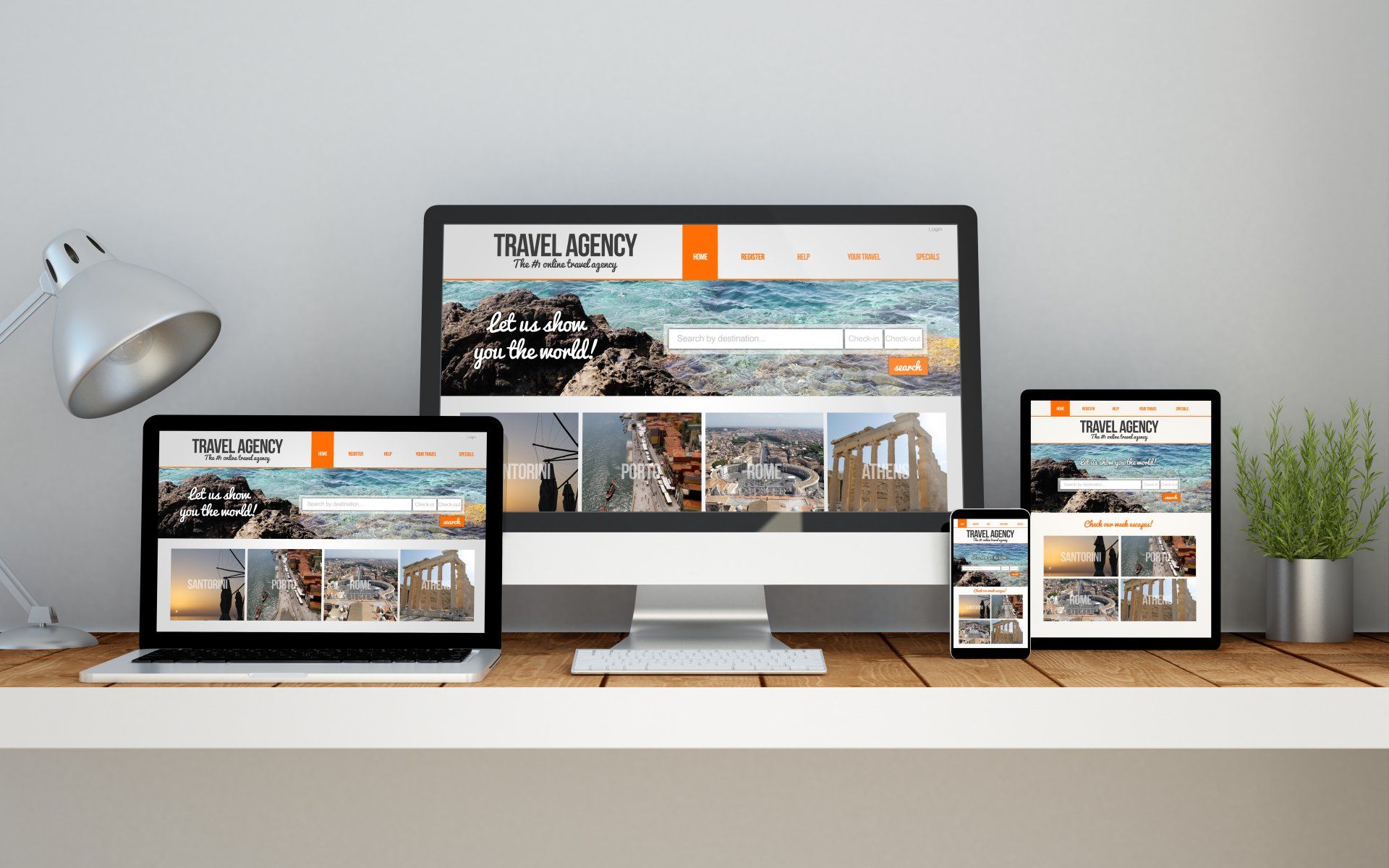
Every business owner wants to exude professionalism and credibility. An important component of creating a positive impression is to have a professional, well-designed website. 94% of the website user’s first impressions are design-related. 75% of users reported that they judged a company’s credibility based on the website design. In addition to an attractive design, other best practices for a website that helps your business create a good impression include: a good user experience by delivering pages that load quickly, a website that is mobile friendly (optimized for any device: desktop, tablet or phone) and a valid SSL certificate, which makes the information transmitted to browsers secure. Web design best practices are constantly shifting, which is why regular redesign efforts, or a new site, are necessary if you want to get the most out of your online presence. Before you launch into a site refresher, we wanted to offer some other information and best practices that have emerged as consumer behavior has shifted in recent years. Modern, professional websites emphasize the visual over the verbal, and a best practice for you to consider would be to emphasize the visual aspects of site design and navigation. From infographics, to clear icon choices and placement to video, you will get more out of your site if you make sure you’re only using the text you need. Along with that move, short sentences and paragraphs, bullet points, and a very clear call to action have emerged as web design best practices to support the emphasis on visuals. This is to allow the visuals to do the work. You’ve probably heard the old cliché that a picture is worth a thousand words, but it’s true. You can show more detail and help customers understand a topic with greater depth when you let your images or video do the work and you use text to add just enough extra discussion to let the reader know how to interpret the graphics and photographs they see. Mobile optimization is a must. Over 60% of website traffic happens on a phone or tablet. Your site must be device responsive, making it look good on a mobile device. Simplifying your navigation is also a big step toward ranking well in 2020. Use contextual calls to action alongside your navigation buttons, emphasizing what clicking the button will do. Along with that, optimizing your site organization to reduce redundant content will help, as will making the organization of pages and sub-pages more intuitive. Remember to keep prioritizing Search Engine Optimization (SEO). If you’re using less text on the page, it needs to be rich in detail and useful while delivering more punch per word when it comes to SEO. Reducing fluff helps the page rank better if the content that’s left is optimized, but you need a plan to optimize that content to get the most out of the rewrite you’re doing. Last but not least, all of this will come together best when your page loads well. Web design best practices are about the user’s experience, so slow load times greatly diminish the impact of your efforts. Quick recap: Professional design is important. Mobile optimization will make the site more inviting to more viewers as mobile devices continue to increase their share of total internet traffic. Use of quality visuals and video is preferred by visitors. Simple navigation and calls to action are important. Don’t let your site just function like a digital brochure. Prioritizing Search Engine Optimization (SEO) will help your website rank higher on critical search engines, like Google and Bing. If your website is not delivering on these basic best practices, you may be hurting your chances of having a better year in 2020 than you did in 2019. Don’t take that chance. Follow through with a site optimization and refresh that makes your current site faster, leaner, and more useful. Or, if your website is not friendly on a mobile device, consider investing in a new website that will greatly enhance your ability to keep customers on the site and convert for more business.

If you want more customers, you need leads. If you want more leads, you should establish some lead magnets. Lead magnets allow your customers to pre-qualify themselves to some degree. With one in place, you can capture information about website visitors that are most interested in your product or service. This allows you to narrow your focus on your best potential prospects. A lead magnet is an offer to provide your website visitor something relevant and valuable in exchange for their contact information. Lead magnets are typically free and the owner of the website gains useful information about a potential lead, at the very least, an email address. Examples of lead magnets are: trial subscriptions, samples, white papers, checklists, e-newsletters, eBook or video course, cheat sheets, discounts and free consultations. Lead magnets are used to increase sales of a product or service or to market other unrelated offerings. They are important because they provide you a prospect’s contact information and establish the beginnings of a relationship. Less than 5% of website visitors will buy something on their first visit. A lead magnet helps establish a relationship and warms up the potential customer to doing business with your company in the future. When a customer signs up for a lead magnet, they provide a name and other details in exchange for the information or offer. They effectively “pay for their lead magnet” with their information. When we use lead magnets in a campaign, we encourage our customers to make the nature of this information exchange explicit. As with other forms of marketing or advertising, some types of lead magnets can be criticized for not being transparent enough. Here are a few things that make a good lead magnet: It should be valuable. Your lead magnet should be designed to provide something of a high perceived value or something that informs or solves a problem. The best lead magnets are specific. The more specific the benefit, the more likely people will be to provide you their information and the more likely you will be to measure its effectiveness. This is a win-win. The customer only takes action if they really need the lead magnet and you can measure and try a variety of other specific leads magnets to capture other leads. Easy and quick to digest. Better performing lead magnets typically are easy to digest. You should only offer eBooks or lengthy reports if you are establishing your own expertise. Think checklists, newsletter sign-up, contests, discount offers. Provides instant gratification. Your lead magnet will work best if you deliver it right away. Makes sense, right? If you can deliver something that is valuable, specific, easy to digest and available immediately, you might be surprised how many people are willing to provide you their contact information and the quality of the potential customers in that group.

With so many marketing channels available, is email marketing still an important tactic within an integrated marketing strategy? The simple answer is yes. Email marketing is more efficient than almost any other tactic, delivering a healthy return on investment. It is generally an affordable and attractive option for companies that want to grow, reach, and engage their target audiences. Email marketing continues to be the greatest driver of revenue for many businesses. Furthermore, revenue from email marketing ROI continues to improve year over year. This suggests that consumers are continuing to engage with brands through email marketing. Most studies show email delivering $38 – $40 per dollar invested, which is almost twice the amount of other high performing strategies like search engine optimization and keyword ads. Research done by Campaign Monitor shows more than 50% of users prefer to get updates from the brands they follow through email. I recently came across this group of statistics compiled by Campaign Monitor in an article by ReadWrite: Messages are five times more likely to be read via email than on Facebook. –Radicati Email acquires 40 times more new customers than Twitter or Facebook –McKinsey Your content will be shared with your email followers three times more than any other visitors. –QuickSprout 92% of all adults online use email, and 61% use it on any given day. –Pew Research Targeted and segmented emails account for generating 58% of all revenues. –DMA Email open rates are highest when a company sends two emails monthly. –Database Marketing Institute Here are five reasons we believe email marketing is a good investment for any size business. 1. People check their email This is one of the major reasons why email marketing is so effective. Not only do most people have an email account already they check it regularly. According to Hubspot, more than 50% of people in the U.S. check their email more than 10 times per day. 99% of consumers check their email at least once a day. 2. It’s not difficult to grow your distribution list By creating simple forms on your website anyone who visits can enter in their email which will be compiled into a list to be uploaded and added to your distribution list. 3. You can continually test and improve results With email marketing, you can create new tests with every send to determine what works best for open rates, click-through rates, and more importantly, creating sales. As you perfect your email strategy and execution, you’ll find that conversions continue to improve. 4. It can be personalized Testing has shown that companies who use personal email styles have a higher rate of success than those who don’t. 5. You can continue to target the same quality audience When you capture an email address, the person providing the address has agreed to receive communications from you. So, by using an email marketing strategy that educates, informs, inspires and offers value, you’re able to target the same audience over and over again without them denying you that privilege or “unsubscribing”. This is incredibly valuable because it takes multiple interactions with a brand for most consumers to respond.

The best way to think of your content marketing is as a funnel. It’s wide at the entrance where people first come into contact with your brand and narrows as you build relationships with them and they become your customers. At the wide entrance, they’re just casual web surfers looking for information online. What you want your content to do is to attract them, pull them in, and move them through the funnel. As the funnel narrows, they become loyal fans of your content brand. There are many ways someone online could enter your funnel. They may bookmark your site or subscribe to your blog. They might befriend you on social media or share your content. If you’re marketing through email, a prospect enters your funnel by signing up for your list so you can send them updates, newsletters, contest entry offers, discount offers etc. Content can serve many different purposes. You need to identify the specific purpose for which you’re building a loyal audience. Ask yourself what you want your content to achieve for you. The content itself shouldn’t be promotional in nature, but just informational. If a reader likes your content, they’ll check out the advertisements as well. Your content’s purpose may be to build awareness of your brand. You may simply want your website to become a household name on the Internet. There’s great value in turning your site into the go-to source for specific information on your niche. Another purpose is to get people engaged with your brand. When people interact directly with a brand, they feel like a part of it, which creates a level of loyalty. Some marketers use their content after a sale to keep in touch with their customers. As part of their sales process, marketers offer to sign customers up to a list or some other service where they offer free helpful content. This creates many more opportunities for future sales and brand loyalty. Your content can also inform customers before a sale to help them make the right purchase. You can offer information on choosing products such as yours and include comparisons or reviews to help them decide. Although they may not choose yours, you’re building a relationship with them that can result in future sales. Your strategy may be a combination that includes a number of the above options. For example, you may want to drive traffic to your website or blog but also indirectly sell your products and services through your content. When deciding on your particular purpose, refer to your business objectives. Your content strategy needs to be in tune with them. If your business objectives aren’t well defined, define them first before extrapolating a content marketing strategy. When the goal is to establish a reputation as a source who provides only relevant, high-value content, then you never let your audience down. If you can accomplish this, your customers will always come to you to get their needs met, even while they’re being bombarded by content and advertising messages from others.
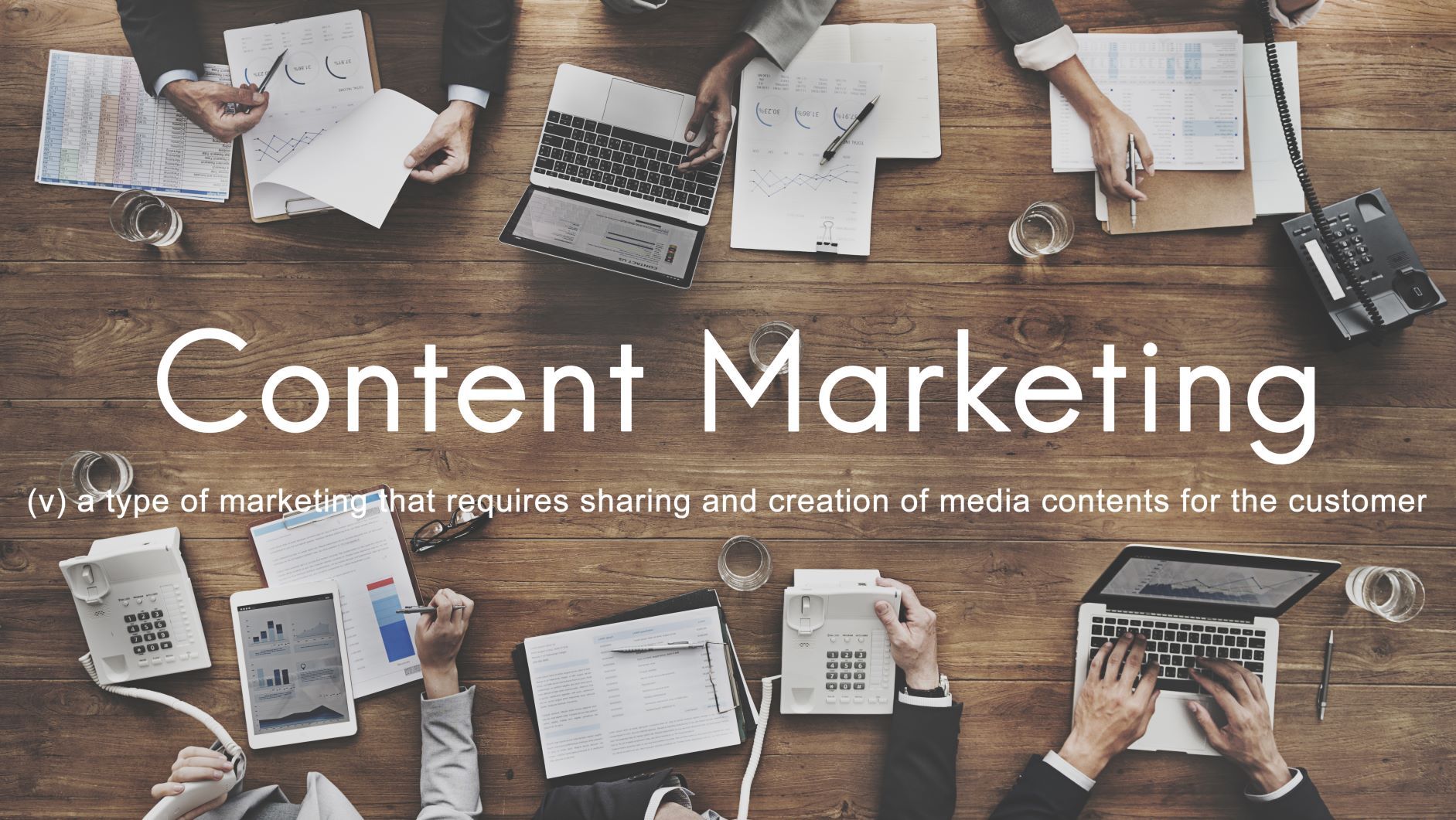
Two important keys to marketing a brand are consistency and making an emotional connection. Your brand needs to be consistent so that it delivers the same message and customers feel you’re a company they can trust. The emotional connection includes the associations your brand makes in a customer’s mind. A brand connects on an emotional level when it makes the customer’s life easier, it makes them safer, it lets them be who they are, it’s part of their family, and so on. You establish this emotional connection by solving a specific problem your customer faces. For businesses that leverage the power of digital marketing, content is very important. Often, before your customers consider or buy your products, they have consumed some of your content that helped them identify or solve a problem. So, what exactly is content marketing? You can find many definitions online, but here’s one from the Content Marketing Institute that sums up quite well what content marketing is about: “Content marketing is a marketing technique of creating and distributing relevant and valuable content to attract, acquire, and engage a clearly defined and understood target audience — with the objective of driving profitable customer action.” We typically think of content as written, such as articles, blog posts, and reports. However, the definition is much broader than this. There is visual content in the form of photographs, images, infographics, graphs, and charts. Multimedia content includes videos, audios, interactive slideshows, and online presentations. Even social media posts such as Facebook updates and tweets are considered content. Content is basically any kind of media online or offline that conveys a message or ideas. The idea behind content marketing is to create and distribute content that engages your audience and leads them to take action. Why Care About Content Marketing? So, why should you care about content marketing? Is it even relevant to your business as a marketing strategy? Well, it isn’t just a passing fad. It’s how we primarily consume information now. The shift to content marketing is a response to the changing ways in which we get information in our society. In the old days, media channels were limited and big advertisers dominated. A consumer sat in front of the TV and, during commercial breaks, they had to endure whatever commercials were shown. Today, all of our media is on demand. We can skip the commercials. Online, we can go straight to the website, video, or article that we want. In-your-face promotional content can be skipped over (and often is). Instead, you need to provide something that your audience will choose to consume, and it should be something they choose over another competitor’s content. You can think of it as push vs. pull: traditional marketing pushed customers to make a buying decision. It was an aggressive tactic. Today, we try to pull customers in with content that interests and engages them. We want to inspire them, educate them and entertain them. These goals will build loyalty and trust. Simply look to top brands in any industry today. Major brands, that have massive, loyal followings are investing more of their marketing resources in content. The data also shows that this shift is happening and at an increasing rate. According to research by U.K. firm ContentPlus: Companies that provide a steady stream of fresh content via their blogs get 97% more inbound links to their site, a huge SEO boost Blog content is 63% more likely than traditional marketing to influence purchase decisions 70% of consumers prefer getting to know a company through articles rather than advertisements 60% of consumers have positive feelings towards a company after reading content on its website or blog Interesting content is one of the top three reasons given in customer surveys when explaining why people follow brands on social media. Finally, you should care about content marketing because it’s relatively inexpensive when compared to traditional marketing methods. Content marketing requires less investment to execute successfully than most advertising strategies. It does require a significant investment of time, but it’s a great way for a small business, without a large advertising budget, to gain a loyal customer base. The costs involved in content marketing are a drop in the bucket compared to advertising costs.
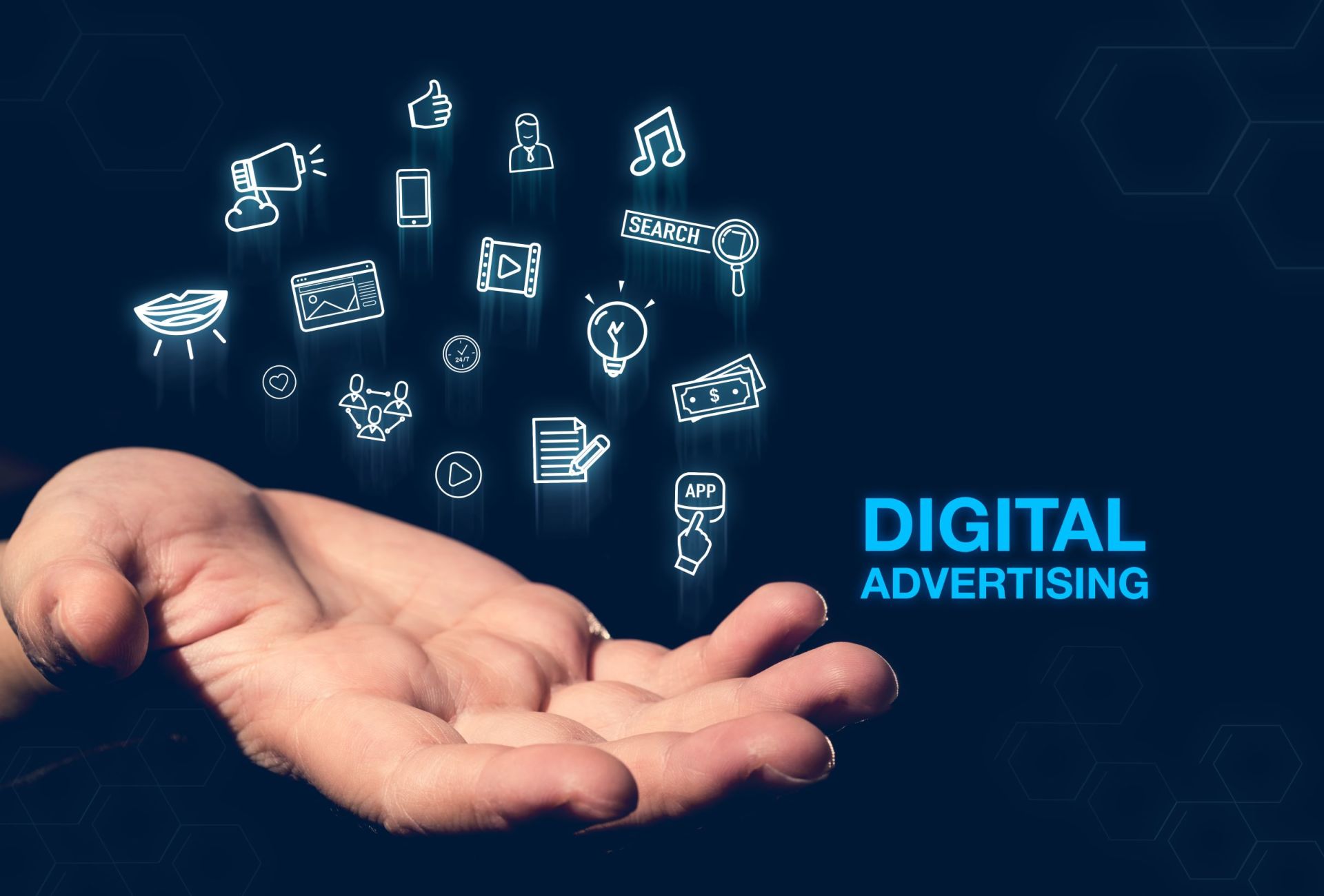
Digital advertising increases awareness—it’s that simple. Digital advertising consists of a range of services, all of which work to promote a business online. More and more businesses are increasing the amount that they spend on digital advertising, and experts suggest digital advertising on social platforms is well worth the spend. The best part about digital advertising is that results can be easily monitored and ROI can be easily tracked. You probably don’t want to be spending lots of money without some proof of performance right? With traditional media channels, there is sometimes no way of tracking the effectiveness of an advertisement in terms of advanced data analytics. With digital advertising, companies like Google and Facebook allow users to access advanced analytics. This way local businesses know that their money is being well spent and that the digital advertisements are positively impacting their storefront. When determining the success of an ad, the important factors will differ case by case. For the most part, the success of an ad lies in the indicators listed below. ROI indicators/measures of a successful campaign: Impressions: the actual # of views on an advertisement Clicks: the actual # of direct clicks on the advertisement Engagements: Social & landing page clicks Results: In most cases, results come in the form of a phone call or a store visit. The Best Places to Advertise Through our team’s extensive work in the digital advertising space, we have come to the same conclusion as pretty much every digital advertising company. The best places to spend money on digital advertising are Google & Facebook. With digital advertising, not only is a local business visible online, but they are visible to the right people online. Platforms like Facebook and Google allow for advanced targeting, which puts a local business in front of consumers who are more likely to convert into a sale. Why advertise on Google? Reach: Google is the largest search network in the world, and consumers are using Google every single day to search for local businesses. Utilizing Google’s massive network capabilities, digital advertisers are able to find ideal prospects and get in front of users looking for their products/services. In the age of digital, people are not looking at TV commercials or listening to radio ads to find a local business, they are searching for a service and then locating your business online. With more than 3.5 Billion Google searches conducted every single day, customers are looking for local businesses and businesses should want to be on Google. Flexibility: Google allows the local advertiser to spend whatever they want, whenever they want. With flexible options for ad spend, advertisers are able to test what works and what doesn’t work for a business. Spend a bit, wait to see how the campaign performs, and then reinvest in larger budgets for greater prospect reach. Why advertise on Facebook? Audience: The audience on Facebook includes 1.32 billion daily active users (DAUs) on average, at an increase of 17% year-over-year. As a local business, you simply cannot ignore the fact that Facebook is likely an intersection in which you can find prospective customers. If the daily average users stat doesn’t have you convinced then let’s talk about how often social media is being used. The average person spends nearly 35 minutes everyday JUST on Facebook, according to a recent study by Mediakix. If there is one thing to take away it is that the audience on Facebook is MASSIVE, and they are on Facebook a LOT. Targeting: Facebook Ad targeting is a marketer’s dream. Facebook allows the ability to focus on users so microscopically that you can basically become a bit of a digital stalker (in a good way?). Target users by their interests, behaviours, age, gender, location, and really anything that their Facebook profile may reveal about them including job title. The Facebook algorithm has brought about changes to the local advertising landscape, but it remains one of the best environments for local businesses to get the word out about themselves! Conclusion By leveraging these two platforms, every local business can easily take their advertising game to the next level, and begin to rake in new revenue—with the data to back their investment.
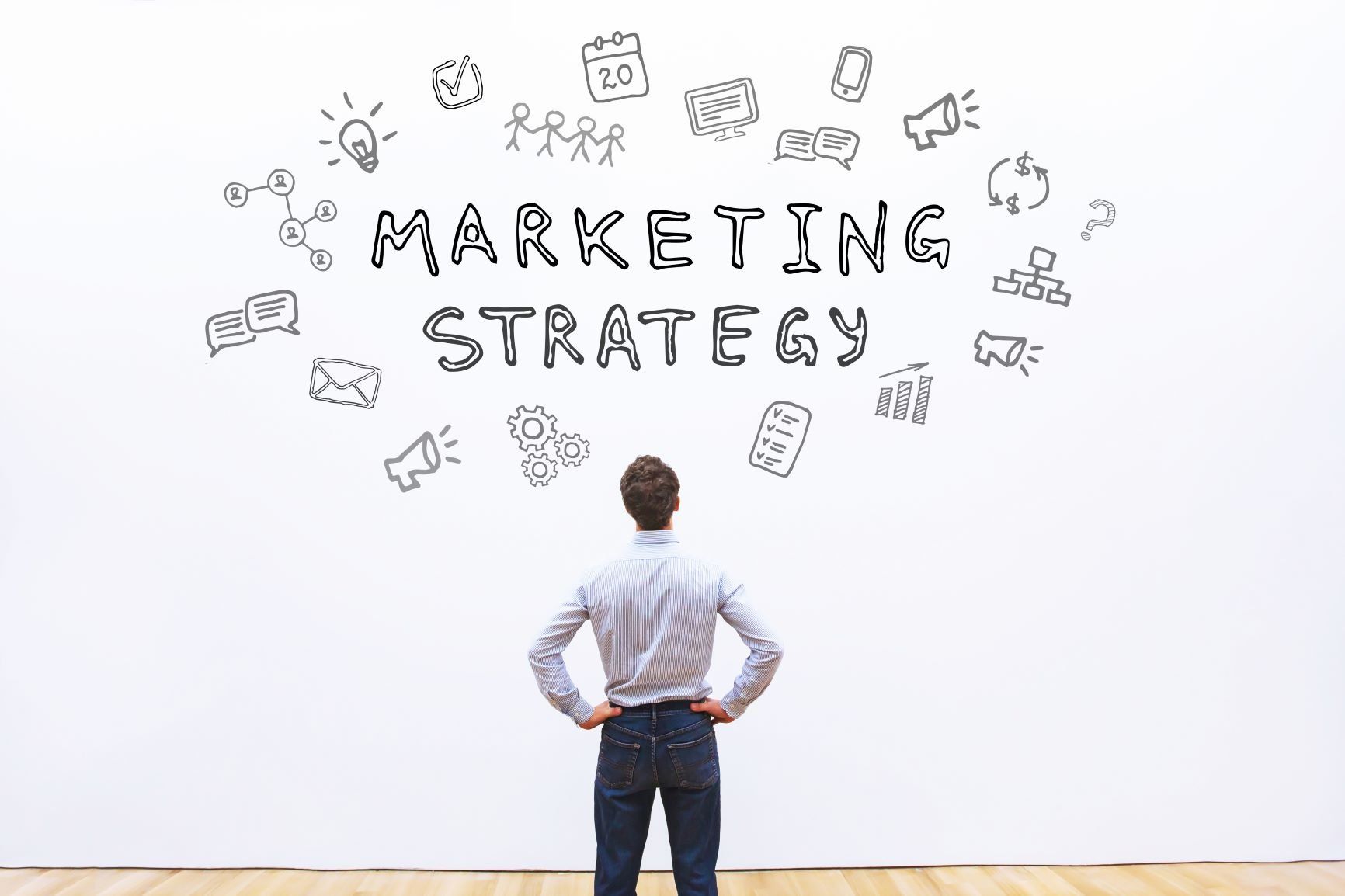
The U.S. Small Business Administration suggests investing 7% to 8% of your gross revenue on marketing. Many businesses do not reach this suggested percentage, or even come close, but we all know we have to invest to grow our business. Before you commit any money, or any more money, to promoting your business, you must first do these two things: 1) Have a professional, well-designed website. This is the engine that drives business and helps create a positive online reputation. If your website does not exude professionalism, credibility and great quality, potential customers may look to your competition. 2) Make sure you have a good handle on your online reputation. A great online reputation is one of the most powerful marketing assets a business has. 94% of the website user’s first impressions are design-related. Respondents said the design was a major factor in their mistrust or outright rejection of a website. 75% of users reported that they judged a company’s credibility based on the website design. In addition to an attractive design, your website should have an SSL certificate (making it secure) and create a good user experience by delivering pages that load quickly and are optimized for any device (desktop, tablet or phone). Online review management is also critical to the success of your business. Review management not only protects and strengthens the reputation of your business, but it also ensures that the money you are investing in promoting your business has the ability to be as effective as possible. After a potential customer has found your business online, 70% will make a decision about what to do next based on online reviews. The social proof provided by reviews and star ratings helps consumers shortcut their research and make decisions faster and with greater confidence. Reviews can also help you rank higher on search engines. Of course, great reviews create trust. But negative reviews that are dealt with quickly and effectively can also create trust – especially when balanced by a healthy number of positive and current reviews. So, while deciding how to spend your marketing dollars, make sure your budget allows for a well-designed, secure website and a reputation management strategy that amplifies the positive and mitigates the negative. If these two “must-have” marketing elements are executed well, all your other marketing expenditures will have a better chance to influence your potential customers. When their interest is peaked, they will do a bit of quick research, see your reviews and visit your website. Make sure you’re in a position to deliver a great first impression!
